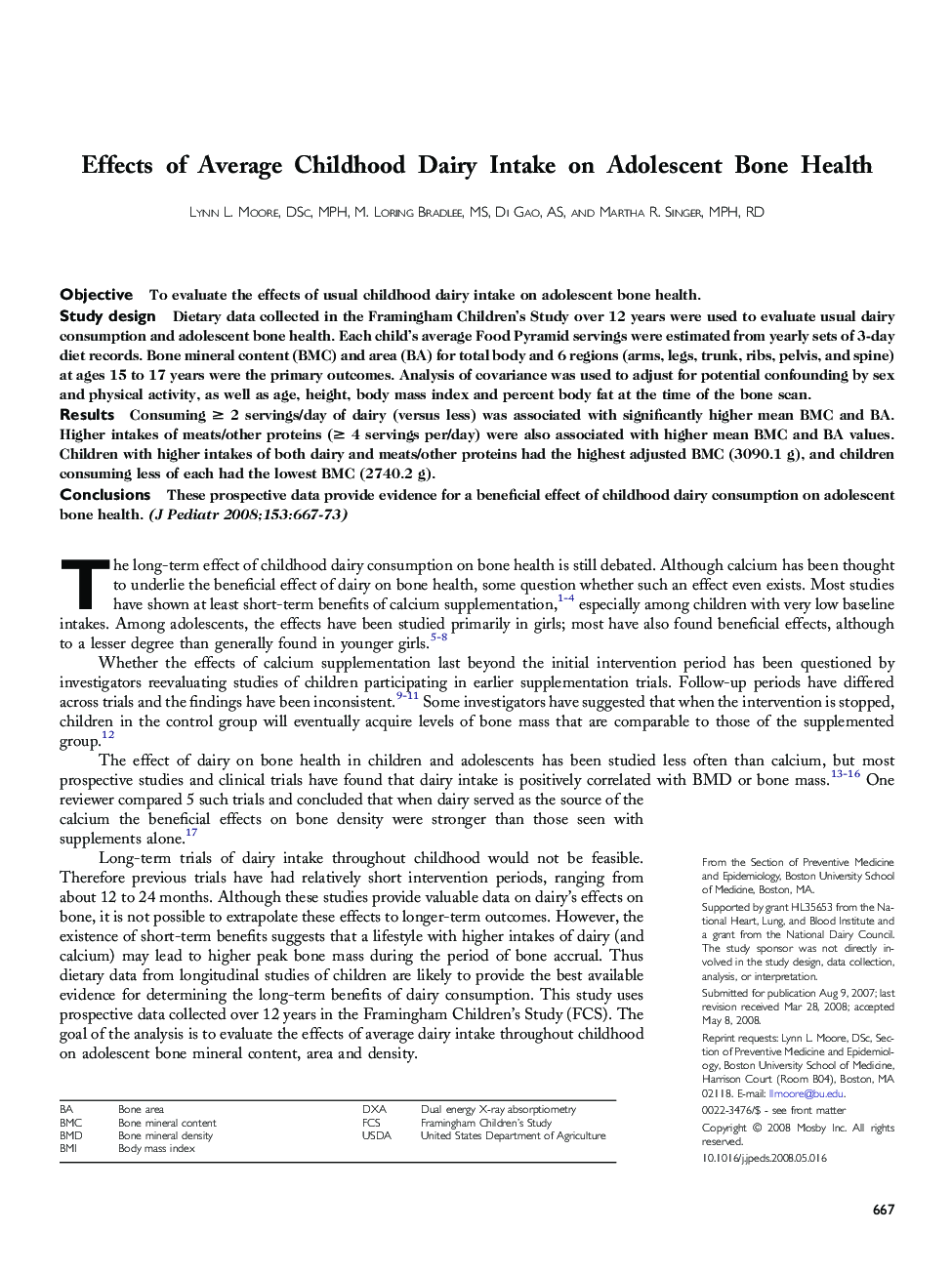| Article ID | Journal | Published Year | Pages | File Type |
|---|---|---|---|---|
| 4166450 | The Journal of Pediatrics | 2008 | 7 Pages |
ObjectiveTo evaluate the effects of usual childhood dairy intake on adolescent bone health.Study designDietary data collected in the Framingham Children's Study over 12 years were used to evaluate usual dairy consumption and adolescent bone health. Each child's average Food Pyramid servings were estimated from yearly sets of 3-day diet records. Bone mineral content (BMC) and area (BA) for total body and 6 regions (arms, legs, trunk, ribs, pelvis, and spine) at ages 15 to 17 years were the primary outcomes. Analysis of covariance was used to adjust for potential confounding by sex and physical activity, as well as age, height, body mass index and percent body fat at the time of the bone scan.ResultsConsuming ≥ 2 servings/day of dairy (versus less) was associated with significantly higher mean BMC and BA. Higher intakes of meats/other proteins (≥ 4 servings per/day) were also associated with higher mean BMC and BA values. Children with higher intakes of both dairy and meats/other proteins had the highest adjusted BMC (3090.1 g), and children consuming less of each had the lowest BMC (2740.2 g).ConclusionsThese prospective data provide evidence for a beneficial effect of childhood dairy consumption on adolescent bone health.
